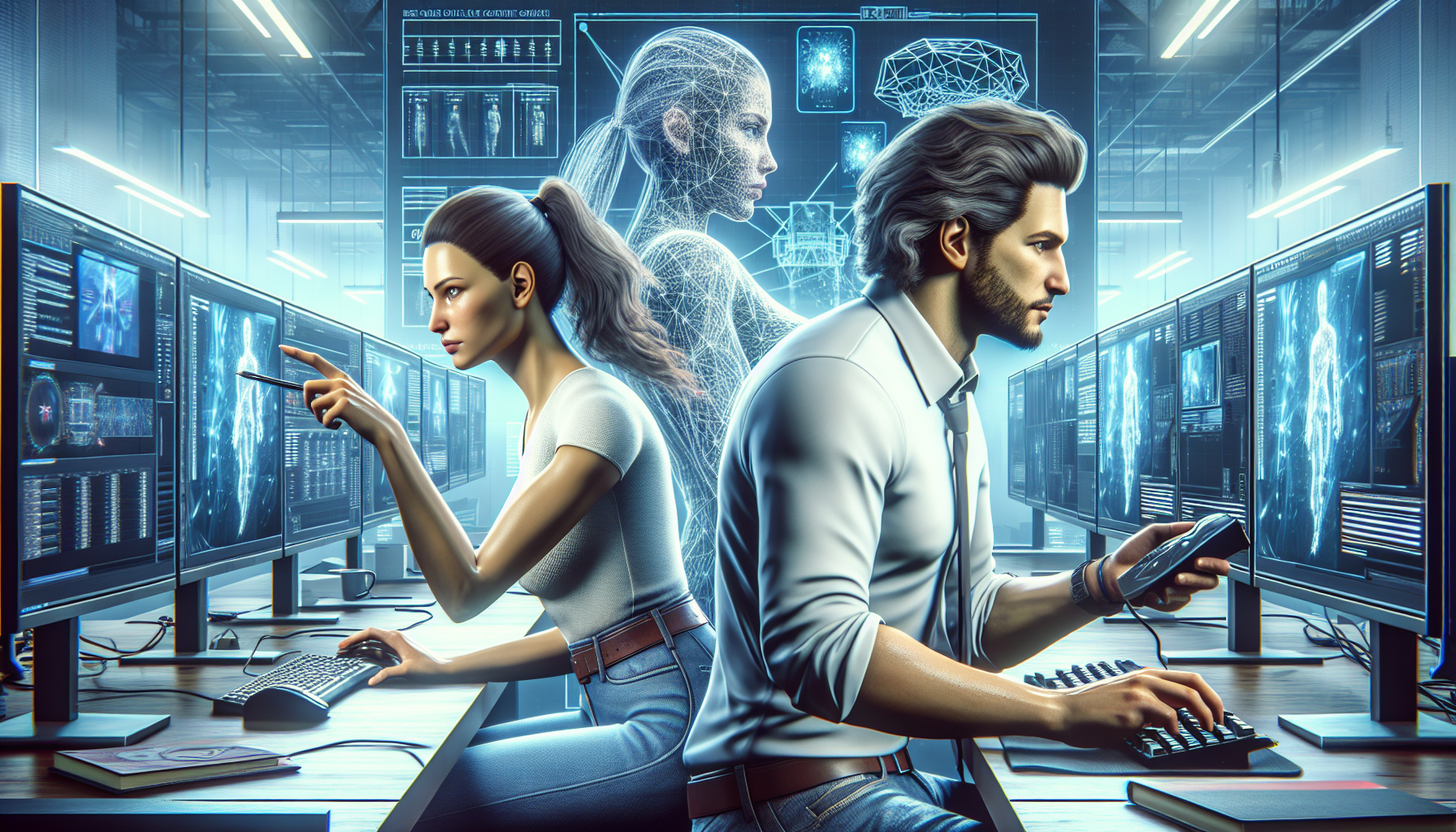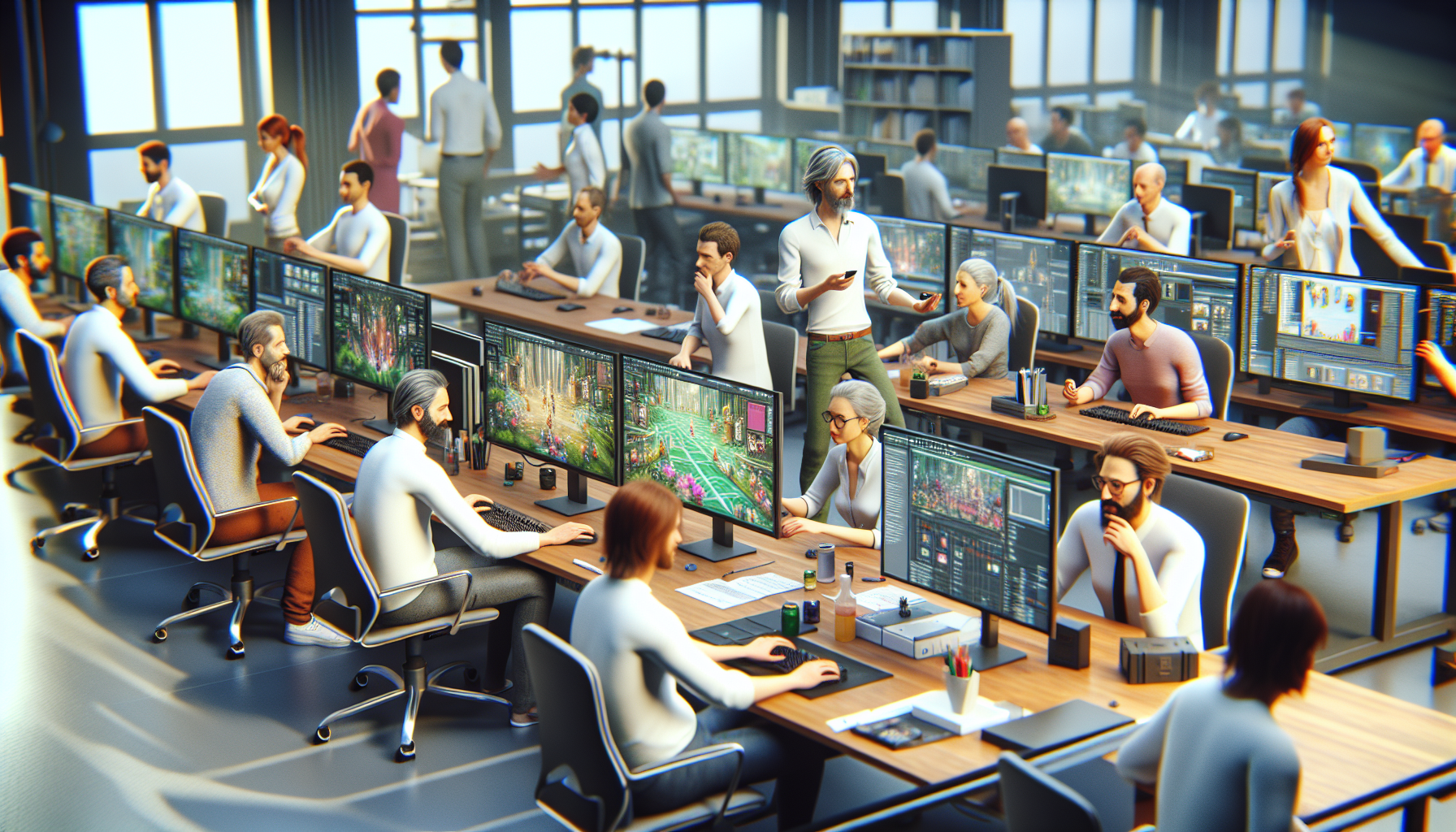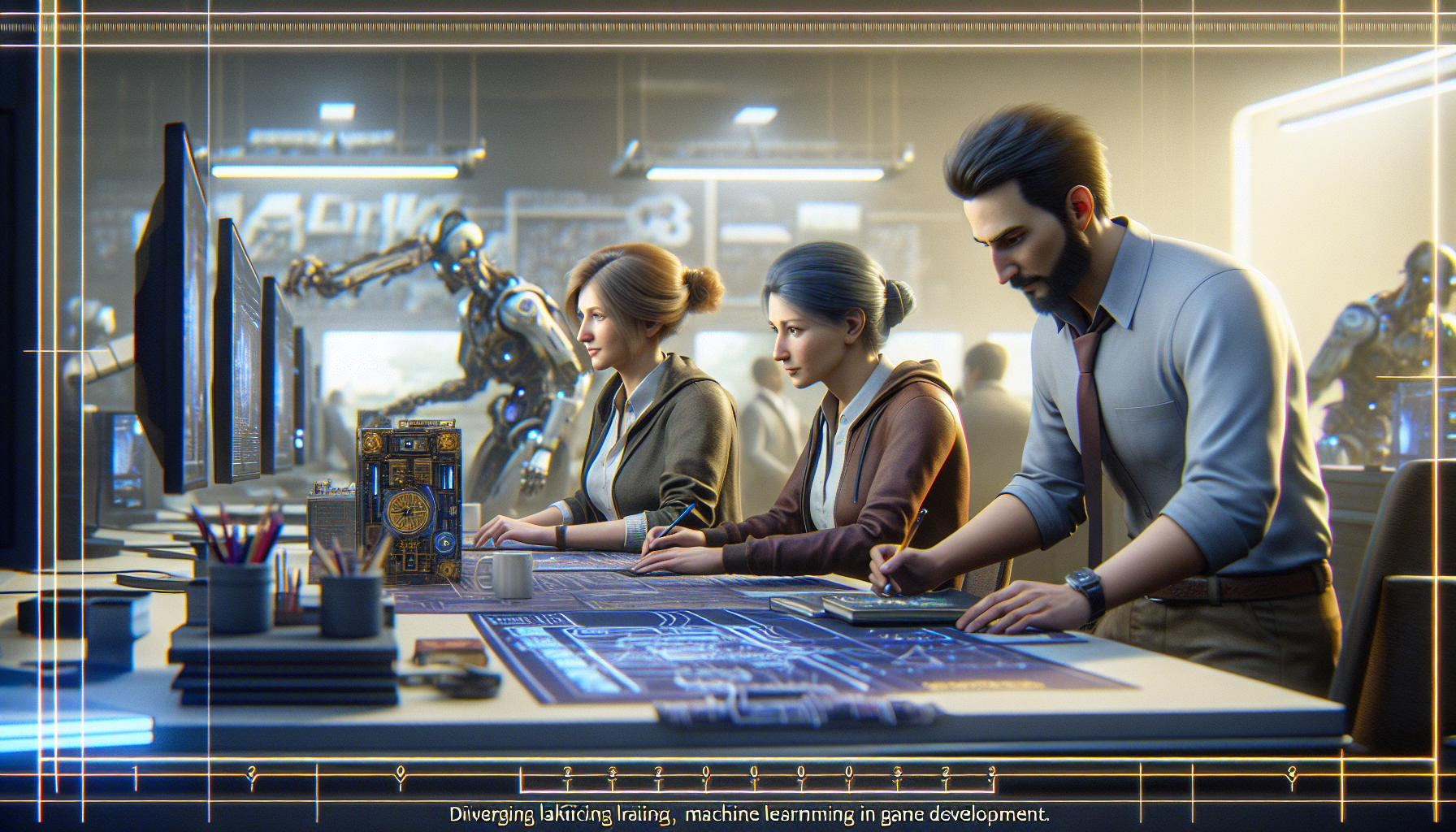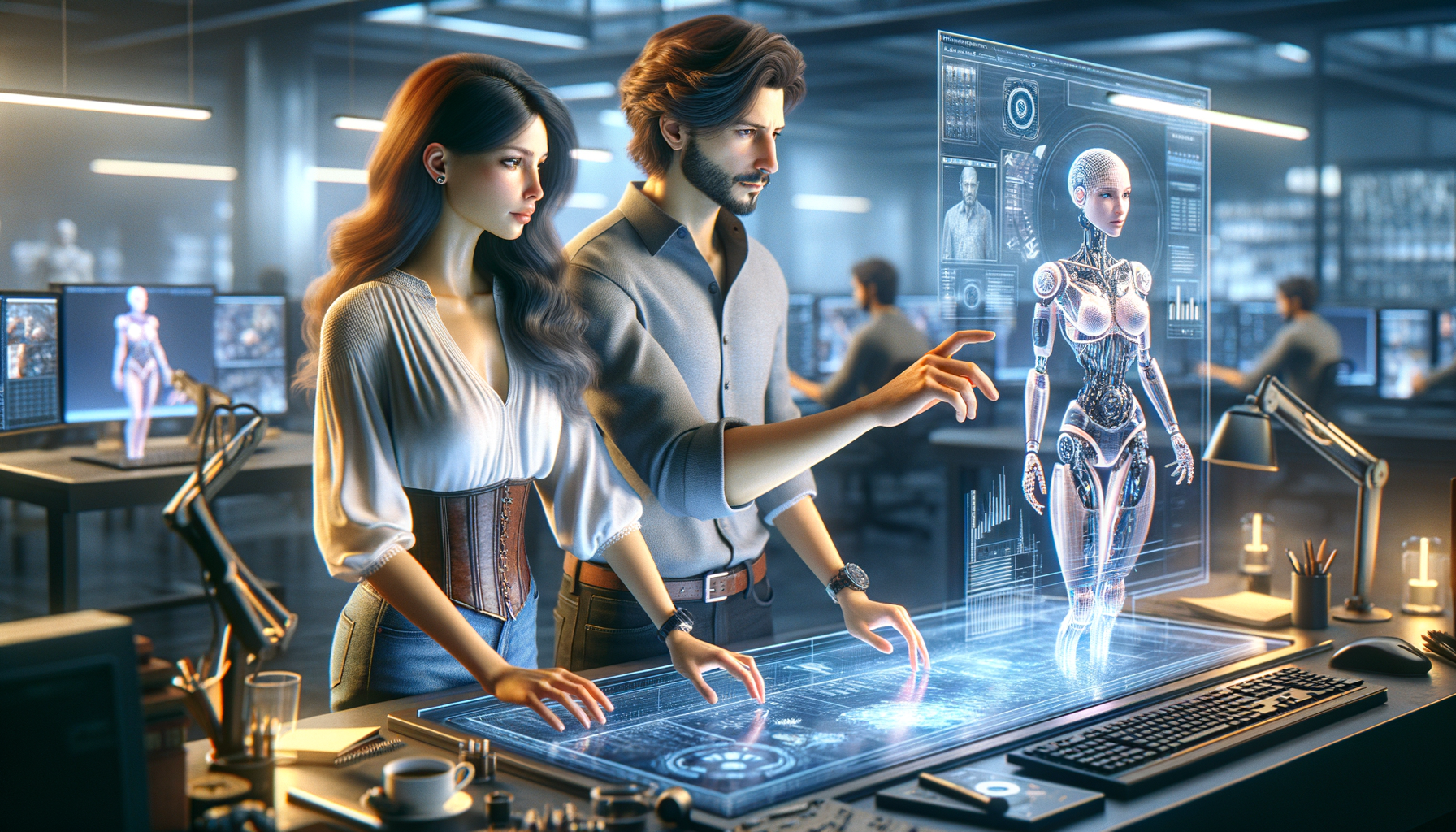Overview of Machine Learning Blueprints

Key Points
- Machine learning blueprints provide structured templates for building models.
- They are essential for solving complex problems in various industries.
- You can adapt blueprints to specific applications, like finance or cybersecurity.
- They often come with pre-built code and examples to facilitate learning and implementation.
- Machine learning blueprints help in standardizing processes and improving efficiency.
What are machine learning blueprints?
Machine learning blueprints are predefined templates or frameworks that guide the development of machine learning models. They provide a structured approach to solving complex problems and standardize processes, facilitating team collaboration and knowledge sharing.
In video game development, machine learning blueprints create more intelligent and responsive game characters, improve game design, and enhance user experience.
In finance, healthcare, cybersecurity, and many other fields, professionals use these blueprints due to their adaptability. This versatility makes machine learning blueprints a valuable resource for implementing machine learning solutions across various domains.
Applications in Video Game Development
In video game development, machine learning blueprints apply in various ways. One common application involves creating non-player characters (NPCs) with more realistic and intelligent behaviors. By using machine learning algorithms, developers can make NPCs that learn from player actions and adapt their strategies accordingly.
Another application lies in game design and level generation. Machine learning blueprints analyze player data to generate levels that match the player’s skill level and preferences, leading to a more personalized and engaging gaming experience.
Additionally, machine learning blueprints enhance game testing and quality assurance. By automating the testing process, developers can identify and fix bugs more efficiently, ensuring a smoother and more enjoyable gaming experience for players.
Challenges in Implementing Machine Learning in Game Development

Complexity of Machine Learning Algorithms
One of the biggest challenges in implementing machine learning in game development is the complexity of the algorithms. Machine learning models require a deep understanding of mathematics and statistics, which can be daunting for game developers who may not have a background in these areas.
Additionally, machine learning models often require large amounts of data for training. Collecting and processing this data can be time-consuming and resource-intensive, making it difficult for small to medium-sized game development studios to implement machine learning solutions effectively.
Lack of Expertise
Another significant challenge is the lack of expertise in machine learning within the game development industry. Many game developers are skilled in programming and game design but may not have the necessary knowledge and experience in machine learning. This knowledge gap can hinder the adoption of machine learning technologies in game development.
To address this issue, game development studios may need to invest in training and education for their teams or hire machine learning experts. However, this can be costly and may not be feasible for smaller studios with limited budgets.
Integration with Existing Game Engines
Integrating machine learning models with existing game engines can also be a challenge. Game engines are often designed with specific workflows and architectures in mind, and incorporating machine learning models may require significant modifications to these systems.
This integration process can be complex and time-consuming, requiring close collaboration between game developers and machine learning experts. Ensuring that the machine learning models work seamlessly with the game engine is crucial for achieving the desired outcomes and maintaining a high-quality gaming experience.
Step-by-Step Solution for Implementing Machine Learning in Game Development

Step 1: Define the Problem and Objectives
The first step in implementing machine learning in game development is to clearly define the problem you want to solve and the objectives you want to achieve. This could be improving NPC behavior, generating personalized game levels, or automating game testing.
Once you have a clear understanding of the problem and objectives, you can start identifying the specific machine learning algorithms and techniques that will help you achieve your goals. This may involve researching existing machine learning blueprints and adapting them to your needs.
Step 2: Collect and Prepare Data
Data is the foundation of any machine learning model. In this step, you need to collect and prepare the data that will be used to train your machine learning models. This could include player behavior data, game performance metrics, or any other relevant information.
Data preparation involves cleaning and preprocessing the data to ensure it is suitable for training. This may include removing outliers, handling missing values, and normalizing the data. Proper data preparation is crucial for building accurate and reliable machine learning models.
Step 3: Develop and Integrate Machine Learning Models
With the data prepared, you can start developing your machine learning models. This involves selecting the appropriate algorithms, training the models, and evaluating their performance. You may need to experiment with different algorithms and hyperparameters to achieve the best results.
The next step is to integrate them with your game engine. This may require modifying the game engine’s architecture and workflows to accommodate the machine learning models. Close collaboration between game developers and machine learning experts is essential during this integration process.
Code Example: Implementing Machine Learning for NPC Behavior
In this section, we will provide a code example that demonstrates how to implement machine learning for improving NPC behavior in a game. We will use Python and the TensorFlow library for this example.
import tensorflow as tf
import numpy as np
class NPCBehaviorModel:
def __init__(self):
self.model = self.build_model()
def build_model(self):
model = tf.keras.Sequential([
tf.keras.layers.Dense(64, activation='relu', input_shape=(10,)),
tf.keras.layers.Dense(64, activation='relu'),
tf.keras.layers.Dense(3, activation='softmax')
])
model.compile(optimizer='adam', loss='sparse_categorical_crossentropy', metrics=['accuracy'])
return model
def train_model(self, training_data, training_labels):
self.model.fit(training_data, training_labels, epochs=10)
def predict_behavior(self, input_data):
return self.model.predict(input_data)
# Sample training data (features and labels)
training_data = np.random.rand(100, 10)
training_labels = np.random.randint(3, size=100)
# Create and train the model
npc_model = NPCBehaviorModel()
npc_model.train_model(training_data, training_labels)
# Sample input data for prediction
input_data = np.random.rand(1, 10)
predicted_behavior = npc_model.predict_behavior(input_data)
print("Predicted NPC Behavior:", predicted_behavior)
In this code example, we define a class NPCBehaviorModel that encapsulates the machine learning model for NPC behavior. The model is built using TensorFlow’s Keras API and consists of three dense layers. The model is trained using sample training data, and predictions are made using sample input data.
The build_model method defines the architecture of the model, while the train_model method trains the model using the provided training data and labels. The predict_behavior method is used to make predictions based on input data.
Future of Machine Learning in Game Development

The future of machine learning in game development is promising, with several trends and advancements expected to shape the industry. Here are five predictions for the future:
- Increased Use of AI for NPC Behavior: Machine learning will be increasingly used to create more intelligent and adaptive NPCs, leading to more immersive gaming experiences.
- Personalized Gaming Experiences: Machine learning algorithms will analyze player data to generate personalized game levels and content, enhancing player engagement and satisfaction.
- Automated Game Testing: Machine learning will automate the game testing process, identifying and fixing bugs more efficiently and ensuring higher-quality games.
- Enhanced Game Design: Machine learning will assist game designers in creating more complex and dynamic game environments, pushing the boundaries of what is possible in game design.
- Integration with Virtual Reality (VR): Machine learning will play a crucial role in enhancing VR experiences, making them more realistic and interactive.
More Information
- Machine Learning and Data Science Blueprints for Finance: A comprehensive book on machine learning applications in finance.
- 10 Machine Learning Blueprints You Should Know for Cybersecurity: A GitHub repository with code examples for machine learning blueprints in cybersecurity.
Disclaimer
This is an AI-generated article with educative purposes and doesn’t intend to give advice or recommend its implementation. The goal is to inspire readers to research and delve deeper into the topics covered in the article.
- The Agentic Startup Manifesto - June 8, 2025
- Remote Hiring in 2025 - April 5, 2025
- Burnout in Remote Teams: How It’s Draining Your Profits - January 27, 2025
